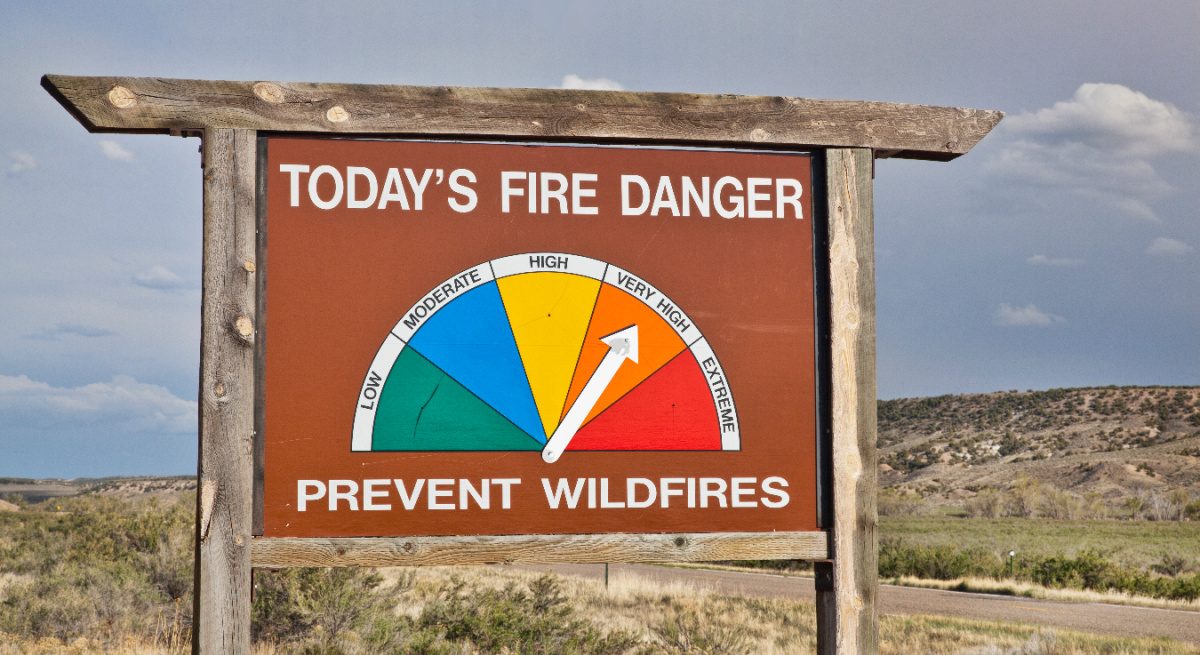Wildfire Season: How Restaurants Can Better Protect Themselves
4 Min Read By Jarrett Wagner
Starting in August, more than 9,000 wildfires burn in the U.S., on average, causing nearly two million acres of damage, which includes residential and business structures. Across the country, the most damaging wildfire seasons have been in recent years, including 2017, 2018, and 2020, accounting for 62% of the structures lost over the last 15 years. The three largest wildfires in Colorado history occurred in 2020. While Texas and Colorado rank highest for high to extreme wildfire risk, these facts alone should give you pause regardless of where you operate your restaurant.
Ahead of the wildfire season, Society Insurance has put together prevention tips and controls a business owner can implement to better protect their establishment from wildfires.
Understand Your Severity Zone
Dependending on which severity zone a business is in will dictate what preparations they need to do to protect their property. As you can expect, preparing for a potential wildfire is even more critical if your property is classified as being in a high or extreme severity zone.
A severity zone is classified as moderate, high or extreme. These classifications can be based on:
-
Fire history in the area
-
Vegetation/landscaping
-
Slope
-
Other terrain features
Search your local area to view the risk using this tool from the USDA and Department of Agriculture. You should also contact your local insurance agent to discuss in more detail.
Identify and Proactively Address Your Defensible Zones
The Federal Emergency Management Agency (FEMA) defines a defensible space as an area around a building in which vegetation, debris and other types of combustible fuels have been treated, cleared or reduced to slow the spread of fire to and from the building. The National Fire Protection Agency (NFPA) recommends a defensible space of up to 200 feet from a structure, which encompasses three zones. Each zone has different maintenance needs:
-
Zone 3: 100+ feet (to property line) – Remove dead trees & plants. Keep trees spaced.
-
Zone 2: 30-100 feet – Remove dead vegetation. Remove hanging branches at least 6 feet off the ground. Trim tall grasses/plants that would allow fire to travel up trees.
-
Zone 1: 0-30 feet – Use gravel, rock or mulch. Relocate firewood piles. Plant high-moisture content annuals and perennials.
Examine – and Possibly Reassess – Your Building Materials
From your roof to your patio, it’s important to understand what materials offer the best fire protection and the controls you can implement to reduce the likelihood of your livelihood going up in flames.
Roofing
Class A fire-rated roofing material is most effective against fires. Fire-resistant roofing materials include:
-
Clay tile
-
Slate tile
-
Concrete tile (fiber-reinforced)
-
Metal
It is equally important to keep roofs and gutters clear of pine needles, leaves or other debris. It’s also a good idea to have a local fire marshal or roofing professional assess your roof.
Exterior Walls
Noncombustible siding materials like brick and concrete offer the best protection against fire. Try to leave six inches of clearance between the ground and the start of the siding to prevent damage from direct flame contact. If a combustible siding material is used, these six inches of clearance, as well as defensible spaces, are especially important.
Windows and Vents
Dual-pane windows with tempered glass offer increased protection against radiant or direct flame contact. Vents should be covered with 1/8 inch (minimum) noncombustible metal mesh screening to help minimize the size of embers that can enter attic or crawl space area vents.
Patios, Decks and Porches
Flammable materials should not be stored on or under decks. Consider enclosing your elevated deck, patio or porch. Some manufacturers are also incorporating fire retardant chemicals into products like wood-plastic composite decking, so be sure to look into this material option. If you have an existing wood deck and are not looking to replace it any time soon, consider having it treated with exterior fire retardant.
Enforce Smoking Controls
The National Park Service estimates at least 85% of wildfires are caused by human activity. Provide receptacles in easily accessible areas and place these away from the building and combustible materials. Ensure your employees empty these receptacles regularly. The ground should also be cleaned of cigarette butts to eliminate fire hazard.
Earlier this month, the National Significant Wildland Fire Potential Outlook expected warmer and drier than normal conditions, especially in the West, throughout the summer. Additionally, more than 90% of the West is in drought with over half the region in extreme to exceptional drought. Wildfire season appears to be starting earlier each year so it’s never too soon to begin preparations. By taking proactive measures of understanding the risk where your business is, regularly maintaining the landscape around your building, and investing in quality building materials, you are taking control of the variables in your power and taking proactive measures for a situation that can seem out of your control.
This information is provided as a convenience for informational purposes only. This information does not constitute legal or professional advice. It is provided to assist you in recognizing potential unsafe work problems or conditions and not to establish compliance with any law, rule or regulation.


